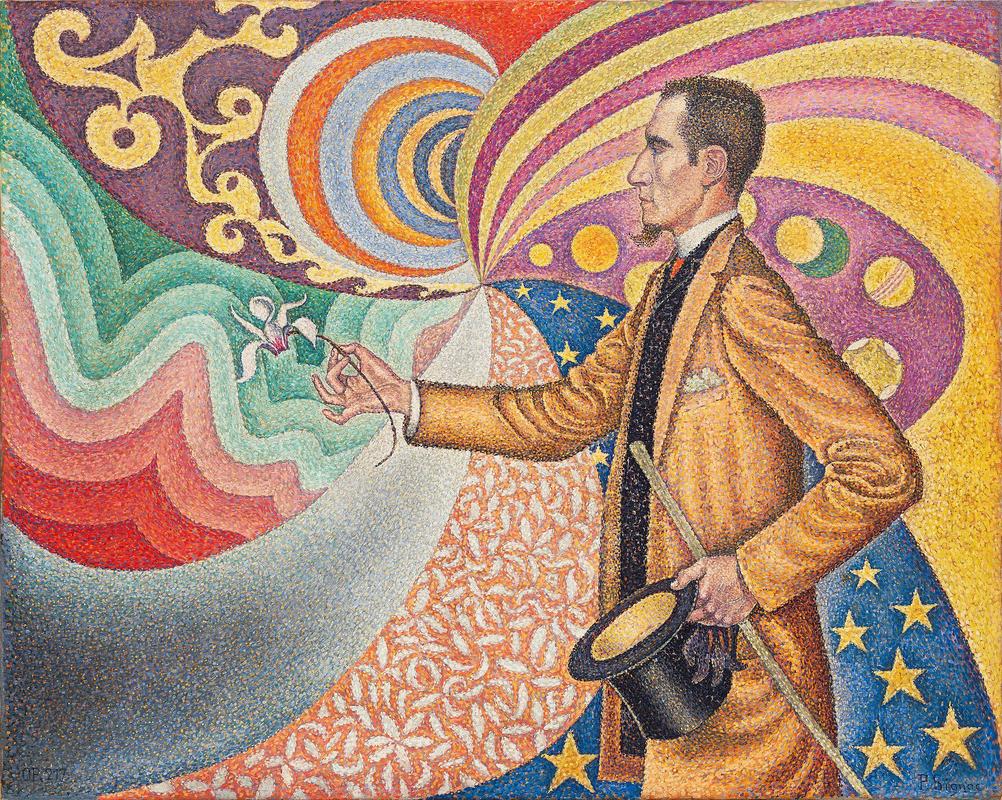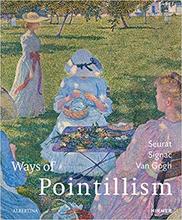More about Opus 217. Against the Enamel of a Background Rhythmic with Beats and Angles, Tones, and Tints, Portrait of M. Félix Fénéon in 1890
- All
- Info
- Shop

Sr. Contributor
Paul Signac’s Opus 217. Against the Enamel of a Background Rhythmic with Beats and Angles, Tones, and Tints. Portrait of M. Felix Feneon in 1890 is a symphony of color, and its long title is a “spoof on scientific terminology”.
This painting is a portrait of Felix Feneon, an editor, translator, art dealer, anarchist activist, and art critic. Feneon was one of the most important critics of his time. He wrote Les Impressionistes en 1886, the definitive art-critical text of the decade, at age 25, and coined the term “Neo-Impressionist” while describing the work of Georges Seurat. He played an important role in the careers of Henri Matisse and Pierre Bonnard, and organized the first exhibition of Italian Futurists in Paris in 1912.
Feneon and Signac were united in their anarchist political ideology and philosophy of art, believing that avant-garde artworks could help in overthrowing the government and creation of a new Arcadian world.
In this work, Feneon is depicted in left-profile with his nose, elbow, and cane descending in a zigzag pattern like rhythmic “beats and angles," as stated in the title. He is static against a symphony of colors in the background. The colors were inspired by a book Signac owned on Japanese patterns and kimono design. By using his Pointillist technique of scientifically juxtaposed dots in unrealistically bright colors, Signac builds a world abstracted from reality.
The background shape is a kaleidoscope pinwheel, an allusion to the aesthetic theory of Charles Henry. The background is purposefully non-specific, intended to resemble the non-specificity of music through autogenesis, or the “inexhaustible energy flow which animates the reality of forms." The swirling backdrop represents pure visual perception while the figure of Feneon, a depiction of something, represents semantic cognition.
Signac believed in the physiology of aesthetic sensations, the ability of color to evoke certain reactions, linking theories of art and color, mathematics, and music together. He believed that color, like music, had fixed rules, which can be utilized to create harmony. Color was traditionally associated with the feminine as emotional, mobile, and intangible, while line or drawing was associated with the masculine for its precision, fixedness, and constancy. However, the Expressionists believed that color, made into its subservient form through following certain rules, could also be rational, clear, and orderly.
Signac’s ideas about the power of abstract art were not widely accepted, and led to criticism of his works for resembling mosaics or tapestries. Feneon defended his friend's Pointillist technique of juxtaposed dots of paint, writing, “Take a few steps back, the technique...vanishes; the eye is no longer attracted by anything but that which is essentially painting.”
Sources
- Argüelles, José. "Paul Signac's "Against the Enamel of a Background Rhythmic with Beats and Angles, Tones and Colors, Portrait of M. Félix Fénéon in 1890, Opus 217"." The Journal of Aesthetics and Art Criticism 28, no. 1 (1969): 49-53. Accessed May 18, 20
- Chipp, Herschel B. "Orphism and Color Theory." The Art Bulletin 40, no. 1 (1958): 55-63. Accessed May 21, 2021. doi:10.2307/3047747.
- “Felix Feneon: The Anarchist and the Avant-Garde–From Signac to Matisse and Beyond.” Apollo Magazine. https://www.apollo-magazine.com/felix-feneon-the-anarchist-and-the-avan….
- Giliberti, Natasha. “The Anarchist and His Friends: Felix Feneon through the Artists He Championed.” MoMA Magazine. April 15, 2020. https://www.moma.org/magazine/articles/283.
- “Paul Signac, Opus 217. Against the Enamel of a Background Rhythmic with Beats and Angles, Tones, and Tints. Portrait of M. Félix Fénéon.” MoMA. https://www.moma.org/collection/works/78734.
- The Art Story. “Paul Signac.” https://www.theartstory.org/artist/signac-paul/.
- Reilly, Samuel. “Felix Feneon–critic, collector, and champion of African art.” Apollo Magazine. August 14, 2019. https://www.apollo-magazine.com/felix-feneon-african-art/.
Featured Content
Here is what Wikipedia says about Opus 217. Against the Enamel of a Background Rhythmic with Beats and Angles, Tones, and Tints, Portrait of M. Félix Fénéon in 1890
Opus 217. Against the Enamel of a Background Rhythmic with Beats and Angles, Tones, and Tints, Portrait of M. Félix Fénéon in 1890 (French: Opus 217. Sur l'émail d'un fond rythmique de mesures et d'angles, de tons et de teintes, Portrait de M. Félix Fénéon en 1890) is an oil-on-canvas painting by French Neo-impressionist artist Paul Signac, created in 1890. The work depicts the French art critic Félix Fénéon standing in front of a swirling, kaleidoscope background. It has been in Museum of Modern Art in New York since 1991, having been donated by Mr. and Mrs. David Rockefeller.
Check out the full Wikipedia article about Opus 217. Against the Enamel of a Background Rhythmic with Beats and Angles, Tones, and Tints, Portrait of M. Félix Fénéon in 1890













